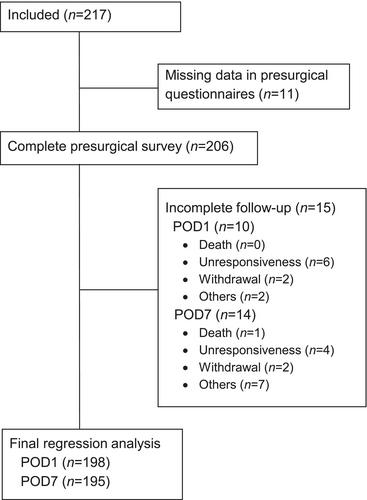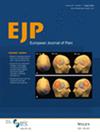Influence of Social Support on Peri-Operative Pain: A Secondary Sub-Sample Analysis of a Prospective Observational Trial
Abstract
Background
Research on the role of social support in the context of acute pain is lacking, although a possible correlation between social support and acute pain might imply consequences for clinical practice. We expected perceived social support to predict the intensity of acute postsurgical pain and the dose of opioids given.
Methods
Within a multicentre prospective observational study, n = 217 adult patients undergoing major surgery were recruited at the University Hospital of Würzburg with an additional questionnaire for assessing perceived social support using the Multidimensional Scale of Perceived Social Support (MSPSS). We also measured pre-operative pain, opioid intake and psychological factors, such as depressiveness or pain catastrophising. Main outcomes were pain intensities at rest and at movement, and morphine equivalent on Day 1 and Day 7 after surgery.
Results
Perceived social support was higher in general than expected from previous studies and depended on marital status. Certain socio-demographic characteristics, pre-operative chronic pain and depressive symptoms also correlated with perceived social support. Using multiple linear regression, we could confirm known risk factors for high intensity acute postsurgical pain, for example, younger age and pre-operative pain. Perceived social support, however, was not a significant predictor of neither postsurgical pain intensity nor postsurgical opioid requirements.
Conclusions
Perceived social support measured by MSPSS does not add to the prediction of acute postsurgical pain in our study. Acute pain might be influenced more strongly by biological and psychological factors than social factors. More fine-grained measures might be necessary to record, for example, daily social support.
Significance
Although social interactions are known to influence pain perception, studies on the role of social support on post-operative acute pain are lacking. In a broad spectrum of surgeries, we found that perceived social support was positively related to pre-operative health measures, for example, lower average pain intensity over the past 3 months or lower morphine equivalent and opioid intake before surgery. Perceived social support, however, was not a significant predictor of neither postsurgical pain intensity nor postsurgical opioid requirements.


 求助内容:
求助内容: 应助结果提醒方式:
应助结果提醒方式:


